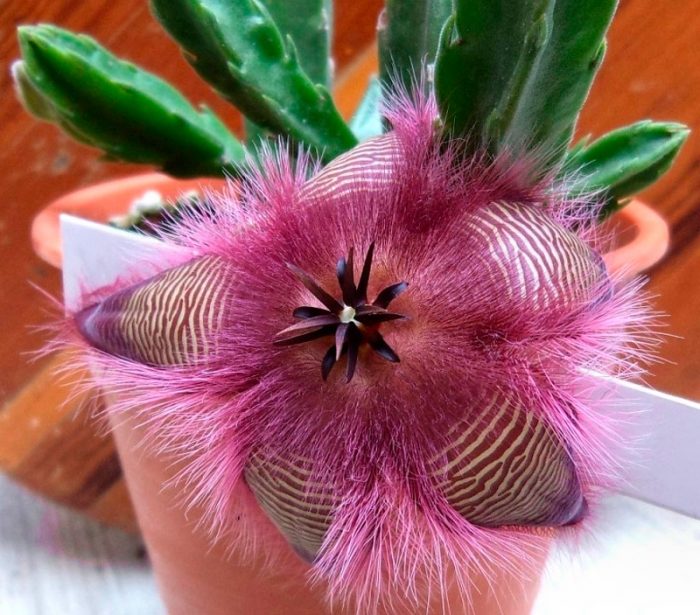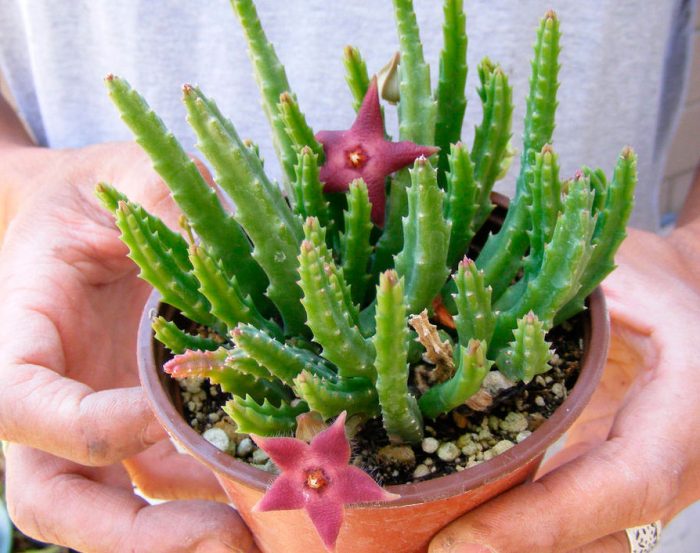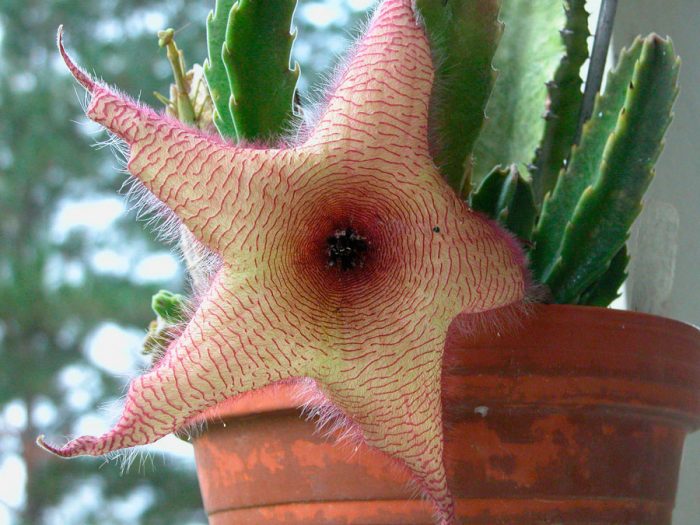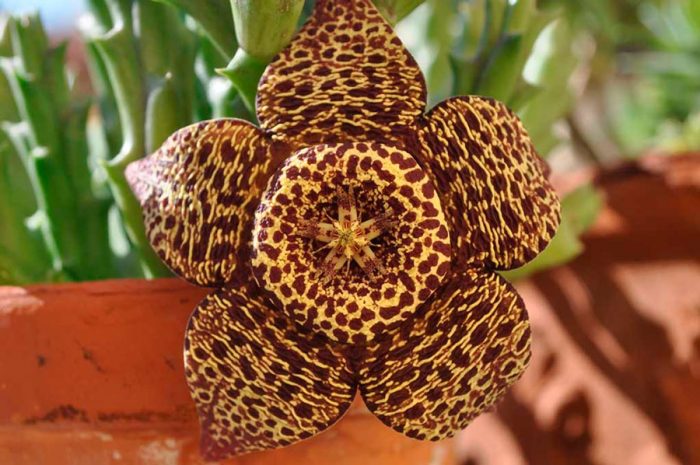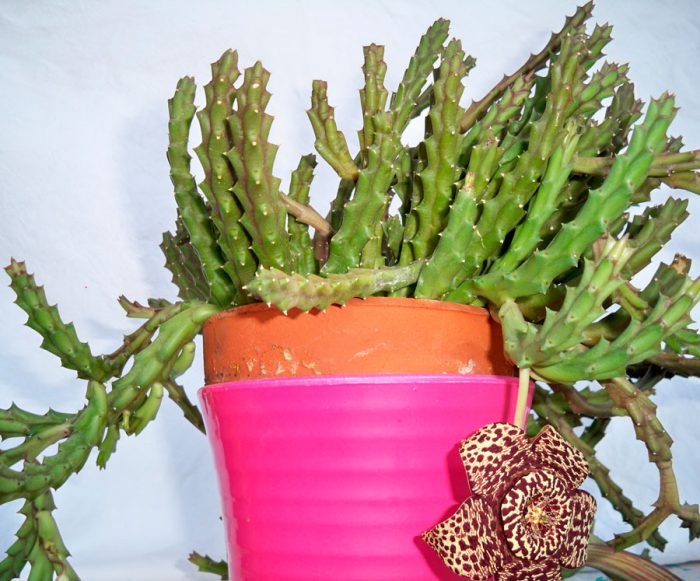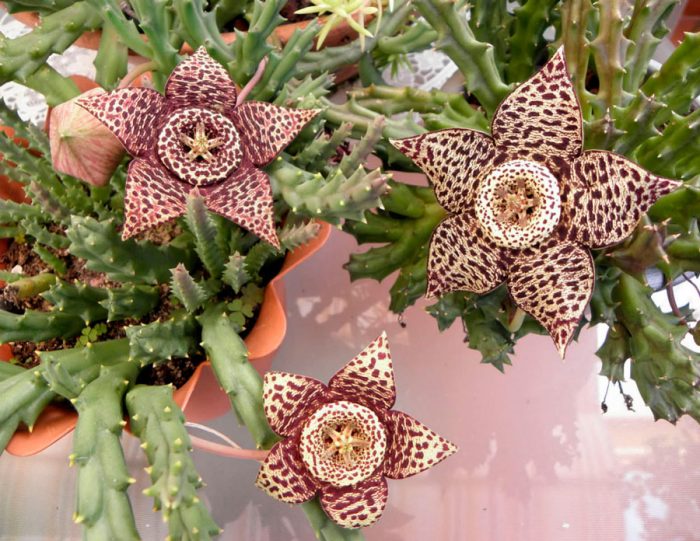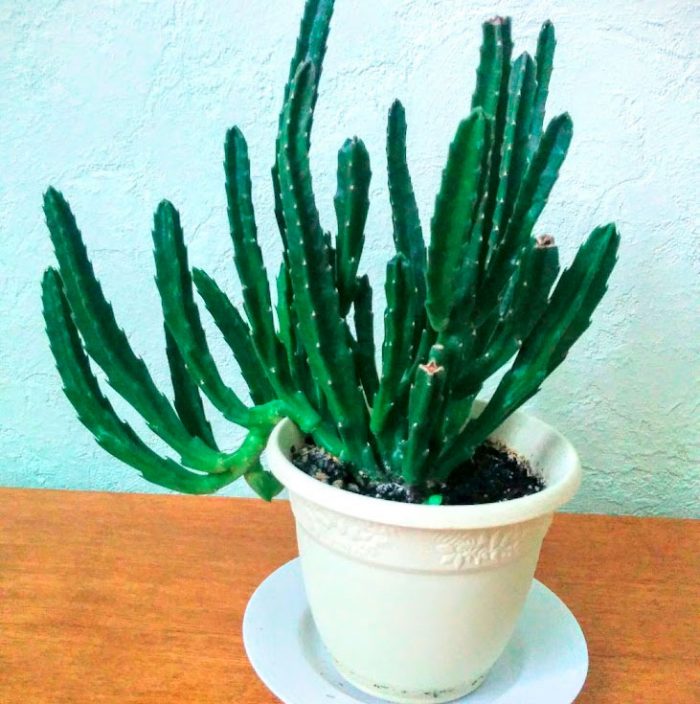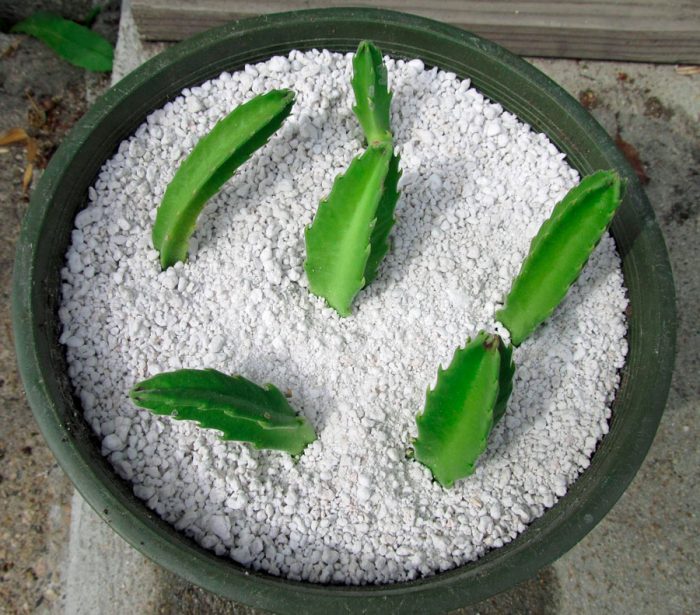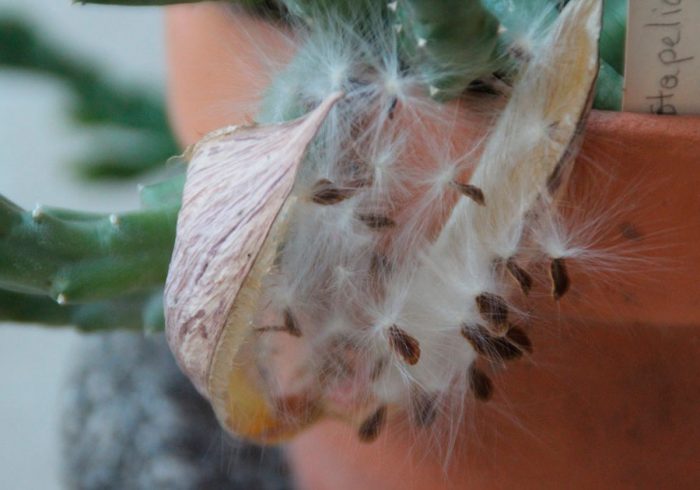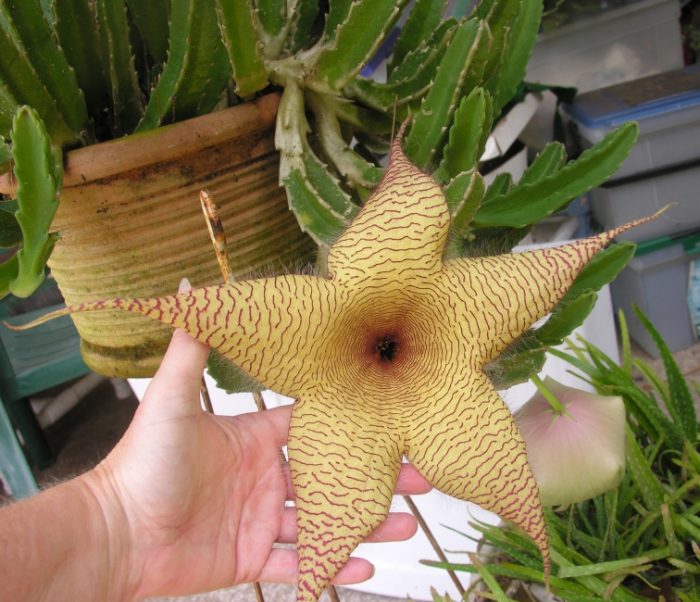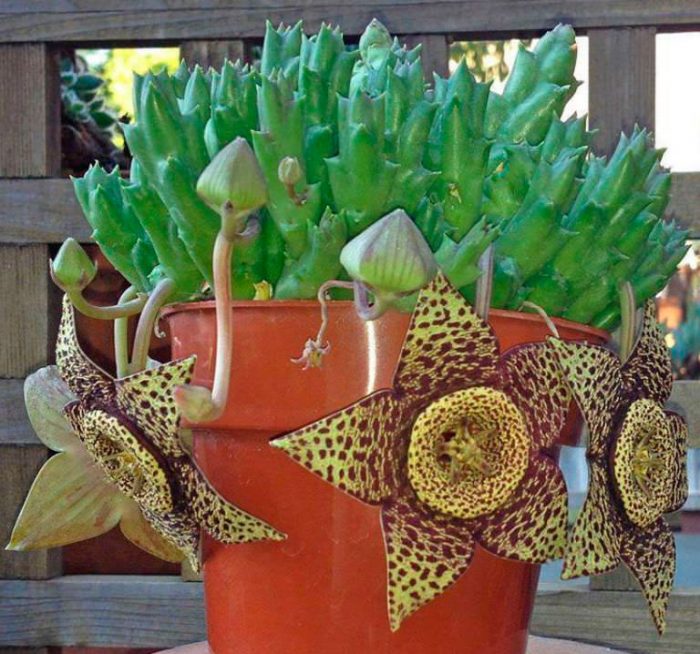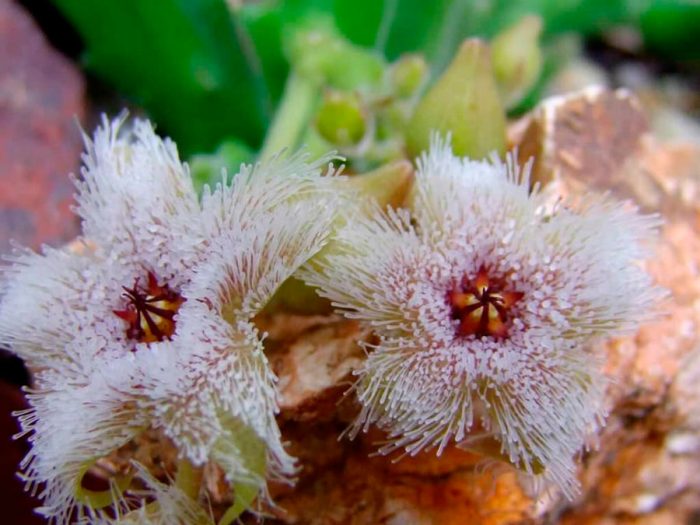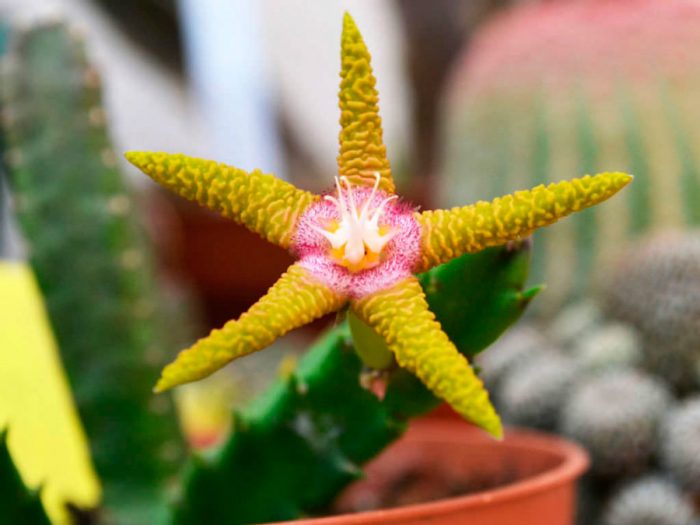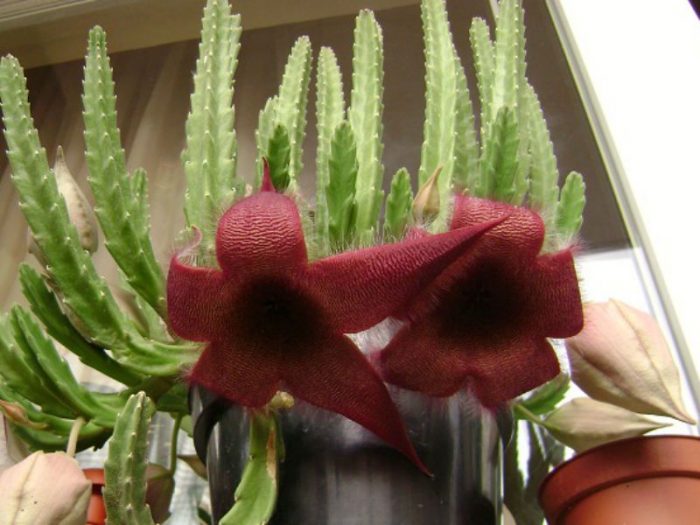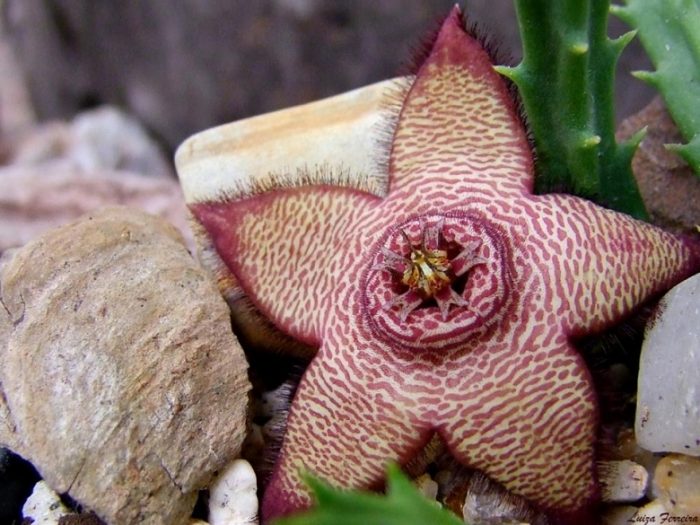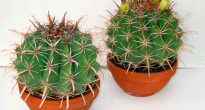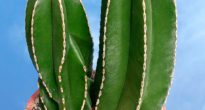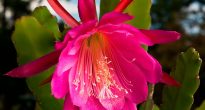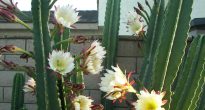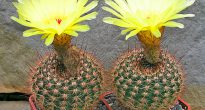The perennial succulent Stapelia (Stapelia) is a member of the Lastovnevye family. This genus includes about 100 different species. In nature, this plant is mostly found in South-West and South Africa, while it prefers to grow on mountain slopes, near water bodies or near trees. Stapelia was named after Van Stapel, who was a well-known 17th century Dutch physician. Such a plant has become popular with flower growers for a relatively long time, because it is undemanding to care for, and this is also due to its extremely unusual flowering. The flower of this plant is famous for its very interesting scent, which does not resemble any ordinary flower aromas. This scent is unpleasant and looks more like a rotten smell. Goethe said about this flower in this connection: "The most beautiful are the most monstrous flowers." Florists in the stocks are attracted by the unusual combination of spectacular beauty with a terrible smell.
Content
- 1 Features of the stock
- 2 Caring for stocks at home
- 3 Reproduction of stocks
- 4 Types of stocks with photos and names
- 4.1 Star-shaped stapelia (Stapelia asterias)
- 4.2 Giant Stapelia (Stapelia gigantea)
- 4.3 Stapelia variegated, or varying (Stapelia variegata)
- 4.4 Stapelia glanduliflora (Stapelia glanduliflora)
- 4.5 Stapelia flavo-purpurea
- 4.6 Stapelia grandiflora (Stapelia grandiflora)
- 4.7 Stapelia mutable (Stapelia mutabilis)
Features of the stock
The stapelia is a succulent, the height of which varies from 0.1 to 0.6 m. It has a large number of tetrahedral succulent shoots branching at the base. Along the edges they have mild large teeth, it is because of them that this flower is called "cactus stapelia". The color of the stems is pale gray or green, and it also occurs with a violet-red tint, which appears in bright sunlight. The foliage of the plant is completely absent. On the surface of single or paired flowers there is pubescence, they are located on bent pedicels, as a rule, at the base of the shoots and less often at the tops. The size of the flower is 5-30 centimeters, it has a very exotic appearance and resembles a starfish in shape. They are painted in one color, but there are also variegated, each individual species has its own unique beauty, as well as a special unpleasant aroma that can cause lightheadedness.
Caring for stocks at home
Temperature
When growing stocks in indoor conditions, first of all, it should be borne in mind that caring for it is directly related to the seasonality of this flower culture.For example, in the warm season, it feels best at an air temperature of 22 to 26 degrees, while in the summer it is recommended to transfer it to a terrace or balcony. In spring and autumn, the stocks have a rest period. In winter, the plant should be removed to a cool place (no warmer than 15 degrees).
Lighting
The flower needs a lot of bright light, while every day it needs sunbathing, otherwise the shoots will become thinner and elongated, which is why flowering may not occur at all. However, on very hot days at noon, the plant needs protection from the scorching sun rays, this will avoid the appearance of burns on its surface. Experts advise placing the slipway on the window located in the western or eastern part of the apartment.
Watering
Since the slipway is a succulent, it does not need to be sprayed or watered abundantly. If water stagnates in the substrate, this can cause the development of a fungal disease, which leads to rotting of the flower. To prevent this, during planting, a drainage layer should be laid on the bottom of the pot, which can be made from clay shards or from expanded clay. In March – September, irrigation is arranged no more than once every 7 days, in October – December - once a week, and in December and January there is no need to water the stocks at all.
Top dressing
It is necessary to feed this succulent in the summer 1 time in 2 weeks, for this purpose, nutrient mixtures for cacti and succulents are used. To increase the plant's resistance to diseases, it should be fed with potassium fertilizer. There is no need to feed the stocks in winter.
Staple transplant
Young specimens need a regular transplant, which is carried out once a year in the spring, as they grow in width relatively quickly. Transplantation of adult flowers is carried out once every 2-3 years. Experienced growers recommend, during plant transplantation, to pull out old stems from the center of the bush, because they will no longer bloom. It is not recommended to replant perennial stocks, they only need to change the top layer of the soil mixture to a fresh one every year, while it is necessary to pull out the stems from the middle of the bush.
To plant such a succulent, you need to take a not very deep pot, since its root system is underdeveloped. A drainage layer should be placed at the bottom of the pot, which should occupy 1/3 of the container. If desired, the substrate can be made by hand, for this you need to combine coarse sand and turf soil (1: 2), or you can purchase a mixture for succulents and mix it with charcoal. Before planting, the substrate must be steamed. After transplanting, the flower should not be watered for several days.
Flowering stocks
As soon as the staples bloom, everyone in the room will immediately know about this, and this will happen because of the unpleasant smell of the flower. This highly unusual scent is essential for the wild-growing flower to attract carrion flies of the Calliphoridae family, which are its pollinating insects. The fact is that these insects like this scent. Flies pollinate the flower, and they also arrange egg-laying in it. However, you should be aware that the staple species flavo-purpurea, native to Namibia, has a relatively pleasant wax aroma. But the bad smell emanating from the flower does not scare away flower growers, the slipway is very popular to this day. So that the apartment does not smell of rot during the flowering of this plant, it is recommended to transfer it to the balcony, and the problem will be solved. Flowering lasts about half a month.
Diseases and pests of stocks
All problems that may arise with this flower are associated with the stagnation of liquid in the substrate. In this regard, it is very important to water the slipway correctly. And of the pests, aphids, spider mites, and mealybugs can settle on it.To get rid of them, the bush must be treated with an insecticidal agent, which can be bought at a specialized store. It is noteworthy that the stocks, which grow in the wild, are very resistant to both pests and diseases.
Stapelia does not bloom
It happens that the staples do not bloom, and this can happen for various reasons, for example: lack of light, warm wintering, excessive and frequent watering, inappropriate fertilization, excess or lack of nutrients in the substrate. In order for the plant to bloom regularly, you need to adhere to several rules:
- Provide the flower with the correct watering regime: in the spring and summer period, watering should be arranged 1 time in half a month, while between them the substrate in the container should completely dry out, starting from October the number of waterings should be reduced to once every 4 weeks, and in December-January the plant do not water at all.
- During the entire dormant period, the plant should be in a cool room.
- You cannot apply too much fertilizer to the substrate, especially those that contain nitrogen.
- The soil for planting must be used sandy loam.
- The plant needs good lighting.
If the flower does not have enough light, then it may turn yellow at the base of the stem. In this case, it is recommended to cut the shoots and use them as cuttings.
Reproduction of stocks
Propagation of stocks by cuttings
To cut the cuttings from the stocks, use a sharp knife, which must first be disinfected. Slices on the uterine bush and on the handle should be sprinkled with crushed charcoal. Before planting the cutting, it must be dried for several hours. After that, it must be planted in a substrate consisting of coarse-grained sand, into which a little finely chopped peat should be added. After complete rooting, the plant should be transplanted into a pot, reaching 70 mm in diameter, it must be filled with a soil mixture, which includes coarse sand, light sod, and leafy soil (1: 1: 1), a handful of charcoal still needs to be poured into it ...
Reproduction of stocks by seeds
Only after the fruit of this flower is fully ripe, seeds can be extracted from it, and this will happen not earlier than after 12 months. After the seeds are ripe, they must be sown in bowls, which are filled with a sandy light substrate. The first seedlings should appear 20-30 days after sowing. After the plants grow up a little, they need to be cut into pots, reaching 60 mm in diameter and filled with the same soil mixture that is used for planting rooted cuttings. After 12 months, young plants need to be transplanted into pots reaching 90–100 mm in diameter, using the transfer method. If you choose this method of growing, then it should be borne in mind that the grown plants may not retain the varietal characteristics of the parent plants.
Types of stocks with photos and names
Star-shaped stapelia (Stapelia asterias)
This stunted plant reaches a height of only 20 centimeters. The stems are most often colored green, but they can also be light red, with small teeth on their blunt edges. On the surface of brown-red flowers, thin yellow stripes are located, as well as pale pink thick hairs. The flowers are on long pedicels at the base of young shoots. This species has a variety - the staple is shiny: it does not have yellow stripes on the surface of the flowers.
Giant Stapelia (Stapelia gigantea)
This succulent is a perennial plant with powerful erect stems, reaching 20 centimeters in height and 3 centimeters in diameter. The shoots have blunt edges and a small number of small teeth. The flowers are very large, they can reach about 35 centimeters in diameter.They are located on long pedicels and have elongated-pointed slightly bent yellowish petals of a triangular shape, thick red hairs are located on their surface, and long white villi along the edge. The smell of such flowers is not as unpleasant as that of other types of staples.
Stapelia variegated, or varying (Stapelia variegata)
The height of such a low-growing plant is only 10 centimeters. The stems are most often green, but there are also pale red, teeth on their blunt edges. One or up to 5 flowers can be placed at the base of young stems. The yellow petals have an ovoid, pointed shape towards the tips. Their outer part is smooth, and on the inside they have a wrinkled surface with asymmetric specks or dark brown stripes. Flowering is observed in the summer.
Stapelia glanduliflora (Stapelia glanduliflora)
The height of this perennial is about 15 centimeters. The thickness of straight stems is about 30 mm, they have wing-shaped edges, which are covered with sparse small denticles. On the bush 1-3 flowers bloom on long pedicels, yellow-green petals have a triangular pointed shape, pinkish specks and stripes are located on their surface. At the edges, the petals are slightly bent and have long white villi, and their surface is covered with a large number of clavate colorless hairs.
Stapelia flavo-purpurea
The height of the bush is about 10 centimeters. The color of the stems, as a rule, is green, but it can also be purple, they have blunt edges on which the teeth are located. On the tops of young stems 1-3 flowers bloom, their petals are ovoid, pointed and triangular in shape, their edges are strongly curved. Outside, the flower is yellowish, glabrous and smooth, and from the inside - yellow-golden (sometimes burgundy) and wrinkled. This flower has a rather pleasant waxy smell.
Stapelia grandiflora (Stapelia grandiflora)
This perennial has tetrahedral stems, and sparse bent teeth are located on the edges. Large flowers have lanceolate petals, outside they are painted in green-blue, and inside - in burgundy, on their surface there are bunches of gray hairs. The petals are bent along the edge, and pubescence in the form of cilia is located on them. Flowering occurs in the summer. The smell of flowers is similar to that of rotting meat.
Stapelia mutable (Stapelia mutabilis)
This hybrid plant has powerful, bare stems, reaching a height of about 15 centimeters, with teeth that are directed upwards. Flowers are placed on long stalks. The shape of the brownish-yellow petals is triangular-ovate, their edge is ciliate. They also have pointed tops of brown color, covered with transverse stripes and dots.
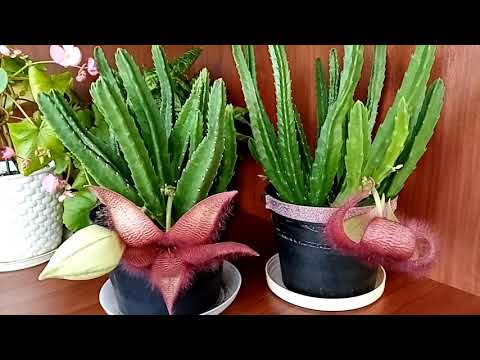

Watch this video on YouTube

